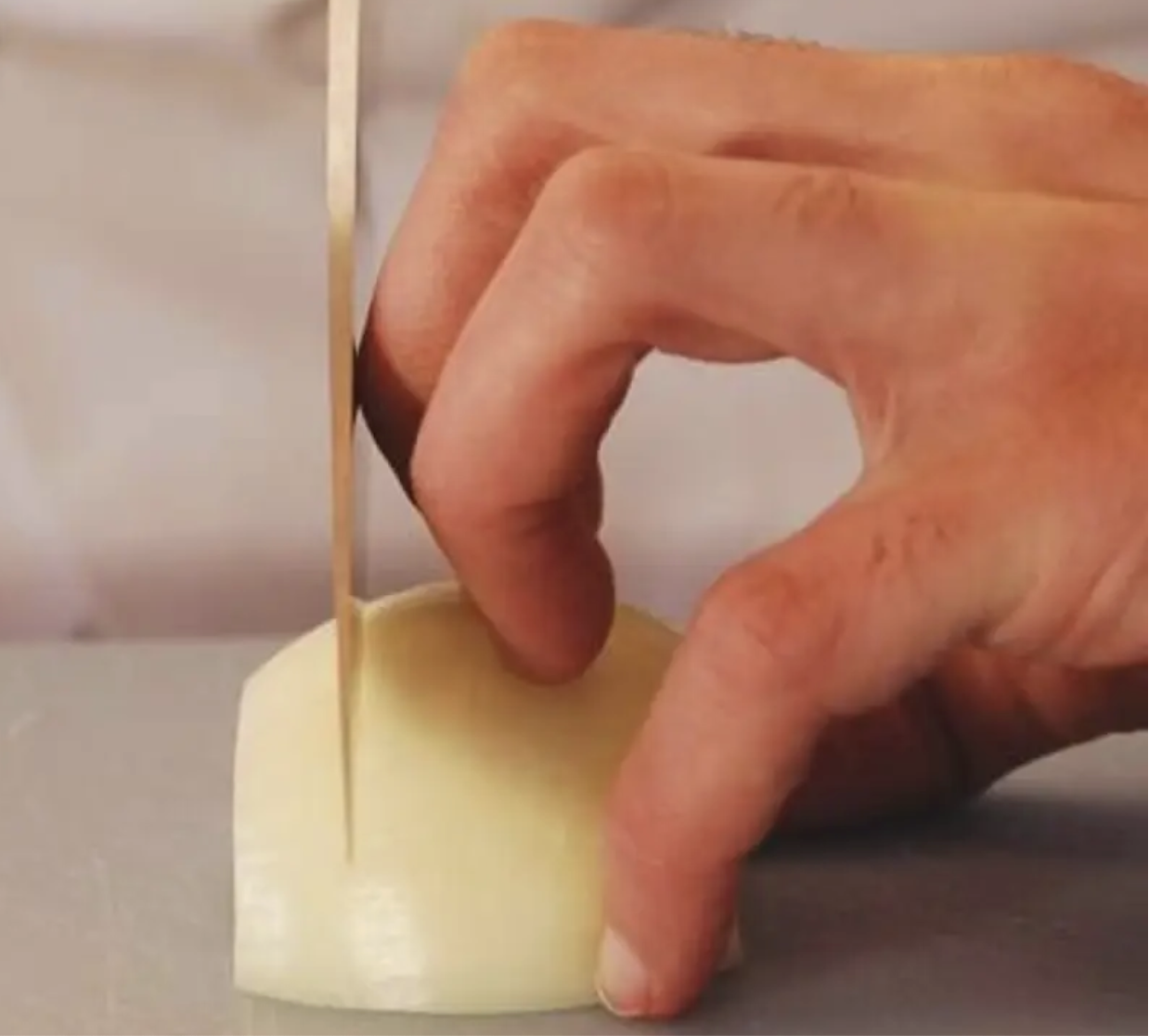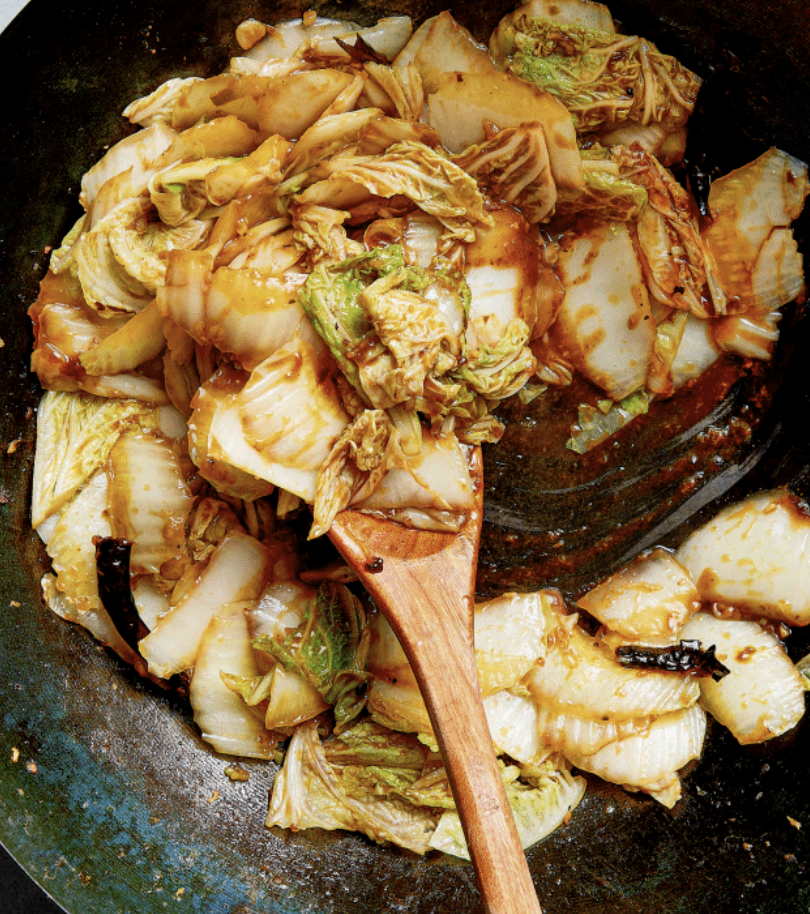Knives Essentials – What You Need to Stay a Cut Above
By Chef David
Knives come in a variety of shapes, sizes, materials, and prices. How do you determine which is right for you? As a kitchen novice, they all seem the same and yet different. The large number of choices may feel overwhelming, but it is rather simple. The most important consideration when selecting a knife is finding one that feels comfortable for you to use.
First, consider how the knife feels in your hand. Everyone has a different size grip – the knife should feel comfortable and well-balanced, but not too heavy. A novice cook should prioritize comfort and durability.
Knives are a very personal choice; they should match your cooking style and feel comfortable. For a kosher cook knife selection can feel more complicated, requiring three separate identifiable knives one for parve, one for meat, and one for dairy. Fortunately, different knives have specific designs for specialized functions.
Basic Types
Often form dictates function. The blade shape is the key characteristic of a knife for example a serrated knife with a toothed edge that grips onto food without slipping, It allows you to cut and slice food that is soft on the inside but hard on the outside. This knife is typically used as a challah knife, though smaller versions are used to cut tomatoes and other fruits.
Chef knife is the kitchen workhorse designed for chopping ingredients quickly with control and should have a comfortable grip with a razor-sharp triangular blade that is slightly curved. The distinguishing characteristic is the long, sharp wide blade that tapers to a point designed for performing cutting tasks. Chef’s knives range in size from six- to 10-inch blades. As your culinary skills increase, you will want to add this versatile knife to your collection.
The paring knife is a shorter form of the chef’s knife with a 3.5-inch blade for greater versatility and precision. Paring knives are great for peeling apples and potatoes, mincing small amounts of garlic and onions, and coring tomatoes, but they are not as well suited for chopping harder vegetables.
The utility knife is a mix between chef knives and paring knives, with a blade that is longer than a paring knife but narrower than a chef knife. This knife is typically used for precision work.
Cleavers have a short, wide blade that resembles an ax with a straight edge that makes them useful for chopping using an up-and-down motion. There are different types of cleavers for vegetables and meat.
How to Choose
Your kitchen knife is key to helping you prepare meals safely and quickly. They need to be comfortable to hold, like a tennis racket – the grip needs to fit, and their weight should be appropriate for you. There are two main classic knife designs. German construction tends to be sturdy and thicker and Japanese knives tend to be lightweight with razor-sharp thin blades.
I enjoy using Japanese-style knives, which I find beautifully crafted, balanced, and attractive.
I have been using three Shun knives – any of which would make a good upgrade. Shun knives are high quality, sharp, and stylish. They are made with full composite tang for lightweight and perfect balance. A full tang knife is where the blade material extends all the way through the handle. This design provides balance and strength.
Classic Vegetable Cleaver 7″ – a Chinese cleaver (Model DM0712)
This multi-purpose knife is ideal for chopping vegetables, it is similar in construction to the Classic Chef’s knife (below) but different in design with a large square blade that is solid yet thin, and sturdy.
The Cleaver is easy to use and made from Shun’s proprietary VG-MAX core. The knife is crafted using 64 layers of stainless Damascus cladding surrounding the carbon steel core. The blade is corrosion and stain-resistant blade with a strong, razor-sharp edge.
The traditional Japanese-style handles have a slight ridge on the right side to provide a comfortable and secure grip. This D-shaped Pakkawood handle is comfortable and attractive.
The Cleaver is my go-to blade when preparing vegetables. It is not intended for cutting meat with bones as it has a thinner lighter blade.
Classic Chef’s Knife (8″ Model DM0706)
This an all-purpose knife with a thin, wide blade and curved belly. It is made similarly to the Cleaver, using Shun’s proprietary VG-MAX cutting core, covered by 64 layers of stainless Damascus cladding. It also uses the elegant D-shaped ebony-finished Pakkawood handles.
The blade is razor-sharp, with an aggressive 16° edge on each side, supporting precision cuts. Shun’s steel is known for its incredible edge retention.
Shun blades are as beautiful as they are sharp, looking at the knife you may notice the wood grain pattern. This attractive knife cuts easily through your food, making food prep a guilty pleasure.
This is a good all-around knife the most common and versatile knife style
Narukami Master Utility 6.5″ (Model VSC0782)
The Narukami Master Utility knife combines the features of both a utility knife and a chef’s knife. Its blade is longer and wider than a traditional utility knife, while the kitsune-style tip allows this knife to handle detail work.
This model is a different style from the prior two knives, its blade is made of Blue II carbon steel construction. Its San-Mai blade style features “three layers” of steel, covering the Blue II core. What makes it stand out is the drip-shaped cladding line, which with use darkens and develops an attractive patina (which helps protect the edge).
Narukami means “thunderbolt” in Japanese, a name that reflects its look. Its larger handle provides a secure and comfortable grip. The Narukami Master is a beautiful and well-crafted knife, which reminds us of a Bunka-style knife and is ideal for precise cutting.
Narukami Master Utility’s construction and appearance captured my attention. Functionally like other Shun products, an elegant and well-crafted knife, visually it is a masterpiece of Japanese craftsmanship.
Shun Cutlery
Shun knives are high-end, and a bit of a splurge, we feel they are worth it. Any of these three is a good choice. If I were to recommend only one knife, it would be the Classic Chef’s knife. It is strong, easy to hold, lightweight and elegant. It has been described as ‘light in the hand and easy on the eyes,’ the Classic Chef’s 8” is a great knife to start your collection, if you want a larger grip, consider the Shun Premier which has a larger handle and a different but equally attractive design.
Shun was created to bring Japanese cutlery to the US and European markets. The brand ‘Shun’ refers to the Japanese tradition of fresh seasonal, mindful eating. The Shun heritage is connected to Seki City, the heart of the Japanese cutlery industry since the 13th Century, with a long history of blade-making. Shun combines the ancient traditions of handcrafted quality, with modern, premium materials and state-of-the-art technology to provide quality tools.
One thing to note when using any high-end knives is always handwash them. With Japanese carbon steel knives, cutting extremely hard items like frozen foods is not advisable as it may chip the blade.
Shun knives have a distinctive attractive look and feel that compliments my cooking style, allowing me to chop quickly and efficiently. Their appearance is simple and elegant.
Knife Safety
Accidents happen in the kitchen, especially when you use knives with razor-sharp blades. By using the correct knives and being safety conscious, you can minimize the risk of cuts. The most common causes of accidents come from using dull knives. This may sound counter-intuitive but while a sharp knife cuts cleanly, a dull one requires extra force which can cause slipping. To avoid cutting your fingertips when cutting use “The Claw” grip. Tuck the fingertips of the hand holding the ingredient slightly and resting your knuckles against the blade of the knife, this takes some practice. Cut slowly until you are confident.
Store knives properly to avoid reaching blindly into a drawer, I use a magnetic knife bar for most of my knives. Some of our staff use blade guards to safely store them in a drawer or transport them. Select blade guards designed for these specific knives to keep the blade fully protected choose a wooden sheath (saya), or plastic strip, perfectly sized for your knife.
Find Your Fit
Start slow. Add one high-quality knife, as your culinary competency improves, you will gradually add new knives to your collection to fit your needs. Though your taste in knives may evolve, you will find that your Shun knife can remain a trusted staple in your repertoire, which is good because Shun is designed to last a lifetime with their included free sharpening for life (the customer needs to cover the shipping).
Take the time to hold and test the knife. Find the knife that fits your cooking style and is comfortable to hold. (Most cooking stores let you feel the knives before you buy) Then allow your knives to inspire your culinary journey. You’ll be glad you did!
Suānlà Báicài 酸辣白菜 Hot and Sour Napa Cabbage
Adapted from America’s Test Kitchen’s A Very Chinese Cookbook
Serves: 4 to 6 – Total Time: 45 minutes
Ingredients
- 1 head napa cabbage (2 pounds)
- 2 tablespoons soy sauce
- 2 tablespoons rice wine vinegar
- 1 tablespoon vegetarian oyster sauce ( Hoisin sauce can be used as a substitute)
- 1 tablespoon cornstarch
- 21/2 teaspoons sugar
- 2 tablespoons vegetable oil
- 3–5 small dried chiles, stemmed, halved lengthwise, and seeded
- 1 scallion, white and green parts separated and sliced thin (optional)
- 1 tablespoon grated fresh ginger
- 1 tablespoon minced garlic
Instructions
- Discard any outer leaves from cabbage that are bruised or torn. Peel away enough leaves to yield 11/2 pounds (16 to 20 leaves).
- Stack 3 leaves of similar size and, using a sharp knife, remove the white portion from the center.
- Keeping pieces stacked, cut cabbage whites crosswise at a 45-degree angle into 1-inch slices. Cut the cabbage greens into 2-inch pieces.
- Whisk soy sauce, vinegar, vegan oyster sauce, cornstarch, and sugar together in a small bowl.
- Heat an empty 14-inch flat-bottomed wok over high heat until just beginning to smoke. Drizzle oil around the perimeter of the wok and heat until just smoking.
- Add chiles and cook, stirring constantly, until beginning to brown, about 30 seconds.
- Add ginger and garlic. Cook, stirring constantly, until fragrant, about 1 minute.
- Add sliced cabbage whites. Cook, tossing slowly but constantly, until cabbage begins to turn translucent at the edges, 2 to 3 minutes. Add cabbage greens and cook, tossing slowly but constantly, until greens begin to collapse and wilt, about 1 1/2 minutes.
- Whisk the soy sauce mixture to recombine and pour over the cabbage mixture. Cook, stirring constantly, until cabbage is evenly coated, and sauce has thickened, about 30 seconds.











